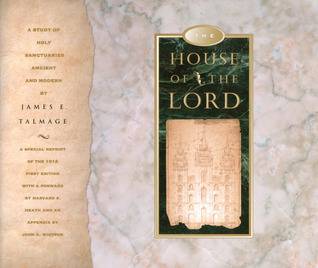

The House of the Lord: A Study of Holy Sanctuaries Ancient and Modern
by James E. Talmage
Everything about the great temple in Salt Lake City speaks of tranquility—the exterior gray tones of the granite and the castle flourishes, which give an added impression of stability. Small oval windows were set above eye level on the north and south to admit only indirect, soft light and to focus worshippers’ attention inward.Since patrons enter through underground passages, there is no street noise. Nor is there a visible clock, or music—in short, little to distract from meditation. On the lower level one hears chant-like repetitions of prayers softly uttered and the rhythmic dripping of ritual oil and water into small basins as officiators anoint novices. On the middle floors worshippers are presented with allegorical presentations of morality and theology. On the uppermost level, people sit motionless to contemplate God’s plan of salvation. On entering the building, patrons change into plain robes so that for a few hours worldly concerns can be left far behind.Because non-Mormons are not allowed inside LDS temples, curiosity seekers have tried through a variety of means, especially upon completion of the Salt Lake City edifice in 1893, to ascertain what the interior looks like and what activities transpire therein. This inordinate interest prompted church leaders to commission Professor James E. Talmage in 1911, three months before being ordained an apostle, to compile a visual and textual representation for the general public. Despite an earlier unauthorized foray into the temple by a camera-toting intruder, Talmage’s assignment would represent the first time that good quality views of the interior would be framed and that the ordinances would be discussed in print with the church’s blessing.In The House of the Lord, more was revealed than anyone had previously thought possible. Members had customarily refrained from speaking about any aspect of their experience there, even to fellow Saints. So through this bold gesture by Elder Talmage and the First Presidency, the cloak of mystery was removed and the temple revealed to the public for what it was—a sanctuary similar to a monastery—or perhaps an ashram or kiva, depending on one’s tradition—where adherents focus undivided attention on attaining spiritual insight. We hope you enjoy this insight into the LDS Temple.
Release Date:
October 14, 1998

